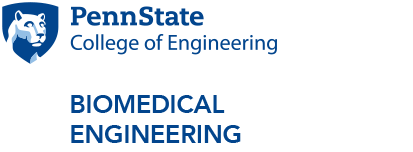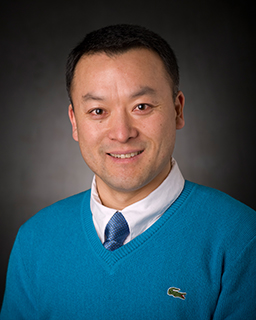$2 million NIH grant awarded to two Penn State professors to develop new kind of wound dressing
5/23/2018
UNIVERSITY PARK, Pa. — Two Penn State professors have received a five-year, $2 million grant from the National Institutes of Health’s National Institute of Arthritis and Musculoskeletal and Skin Diseases to develop a wound dressing made of semi-synthetic biomaterials. Once developed, this new kind of wound dressing would promote faster and more complete healing for the millions of people who suffer from skin wounds.
Receiving the grant are Yong Wang, professor of biomedical engineering, College of Engineering, and Na Xiong, professor of immunology, College of Agricultural Sciences. The grant will enable them to continue to test a hypothesis that would advance wound dressings from their historical primary function, promoting wound closure.
Wang and Xiong want to develop a wound dressing that promotes both wound closure and restoration of immune homeostasis at the tissue, cellular, and molecular levels. Their hypothesis posits this would be achieved via sustained release of vascular endothelial growth factor (VEGF), a single protein that stimulates the formation of blood vessels, and another protein, CCL27, from a dual aptamer-functionalized wound dressing.
The project the grant is funding is the first study to develop a dual-functional wound dressing for both wound closure and immune homeostasis. If successful, the research paid for by the NIH grant would open a new avenue for developing a skin wound dressing that promotes complete healing.
“Most people think that our skin just functions as a physical barrier that protects the body from the environment,” Wang said. “So historically when researchers designed wound dressings the idea was to close the barrier as early as possible. The reality is that the skin is not only a barrier but also an organ that has a lot of immune cells.”
Restoring blood vessels is an important part of skin wound healing. Without necessary blood vessels, and in turn blood supply, the skin tissue will begin to die. “For healthy people, the healing is fast," Wang said. "But for those with diseases such as diabetes, it's very difficult for the wound to heal. We want to promote the growth of new blood vessels into the wound area, then the whole thing will be able to fully recover.”
Wang and Xiong have three specific aims they hope to achieve on the path to creating their more advanced wound dressing material. The first is to develop a novel semi-synthetic wound dressing made of biomaterials that include two aptamers. “Aptamers function like a synthetic hand at the molecular level,” Wang said. “This ‘hand’ holds the protein grams carefully so the drugs can be released slowly.”
The second aim is to examine the roles of VEGF and CCL27 in promoting wound closure and immune homeostasis at the tissue, cellular, and molecular levels. This will determine if the release of protein drugs will actually promote wound healing.
The third aim is to evaluate the abilities of repaired skin against environmental assaults. While someone can look at an old skin wound and believe it has healed, that does not mean the function has recovered. “After the skin has recovered, are the sweat glands functioning? Do we have hair growth?” Wang said. “That’s all to be considered for complete healing.”
Wang noted that in the U.S. alone, skin wounds affect more than 7.7 million people annually. The economic burden of treating these cases reaches into the billions of dollars, he added.
“If the wound dressing we are trying to develop works, then we can have people recover much faster,” Wang said. “You not only improve quality of life, but you can also reduce a significant societal and economic burden.”





